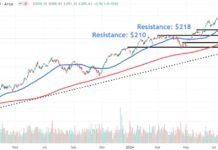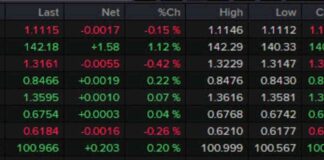Tencent: Evaluating the Overstated Opportunity and Reasons for Exiting (Ratings Downgrade)
Tencent (OTCPK:TCEHY) has been a standout performer among US tech peers, a trend that has raised eyebrows in the industry. The company boasts a diverse portfolio of businesses that cater to various aspects of everyday Chinese life, making it a force to be reckoned with in the tech world. However, recent concerns have surfaced regarding the company’s ability to sustain its growth momentum, hinting at a possible saturation point due to its immense size.
Despite its seemingly reasonable valuation, when factoring in a necessary “Chinese discount,” Tencent’s stock no longer appears as attractive. As a result, I have downgraded the stock to a neutral rating, reflecting my apprehensions about its future prospects.
Stock Performance and Key Metrics
In my previous coverage of Tencent in December, I recommended a buy rating following a dip in the stock price due to new gaming restrictions. Since then, the stock has outperformed the S&P 500, delivering a solid return of around 30%. However, this impressive performance does not align with the company’s fundamental results, prompting me to suggest closing any long positions at this juncture.
Tencent, alongside Alibaba (BABA), stands as one of China’s tech giants, boasting a diverse range of businesses that position it as the “PayPal of China,” “YouTube of China,” and “Facebook of China,” among others. While this diversity was once a major selling point for the stock, the fact that it’s trading at 2017 levels raises doubts about its current appeal to investors.
The latest quarter saw Tencent post an 8% year-over-year revenue growth, with gross profit expanding at a faster 21% rate, driven by a renewed focus on profitable growth. Notably, online advertising experienced a 19% YoY growth, supported by the company’s efforts in leveraging machine learning to enhance ad analytics.
The fintech and business services segments delivered the most significant improvement in gross profits, with the company mitigating risk in its credit lending arm. However, the business services segment, which includes its cloud division, only saw growth in the “teens range,” indicating a slower pace compared to other segments.
Valuation and Investment Outlook
At present prices, Tencent is trading at approximately 16 times this year’s earnings estimates, with net cash and investments accounting for around 30% of its market cap. Management’s commitment to doubling share repurchase activity this year is a positive sign, but projected buybacks would only represent a fraction of 2024 earnings.
Compared to US tech stocks, Tencent’s valuation may appear attractive, but aggressive growth estimates and lower revenue compared to previous peaks raise concerns. Chinese equities in general trade at discounted valuations, with Alibaba trading at around 9 times earnings and carrying a significant cash and investment buffer. While a 20x earnings multiple was initially targeted for Tencent, a more conservative approach suggests a 14x multiple could be more suitable, factoring in the typical “Chinese discount.”
Conclusion
In conclusion, Tencent’s future outlook appears lackluster amidst market challenges and growing competition. While the company maintains a strong balance sheet and potential growth opportunities with Weixin, the emergence of TikTok poses a notable risk. To enhance shareholder returns and boost confidence, management may need to increase its shareholder return program to align with industry leaders like Meta Platforms and Alphabet.
Until significant changes are made to address these concerns, I am downgrading Tencent to a neutral rating based on the mediocre risk-reward profile and limited catalysts for upward growth. Investors should tread cautiously in the current landscape and remain vigilant of evolving market dynamics.
Editor’s Note: This article discusses securities not traded on major US exchanges. Please consider the associated risks before investing in these stocks.

















